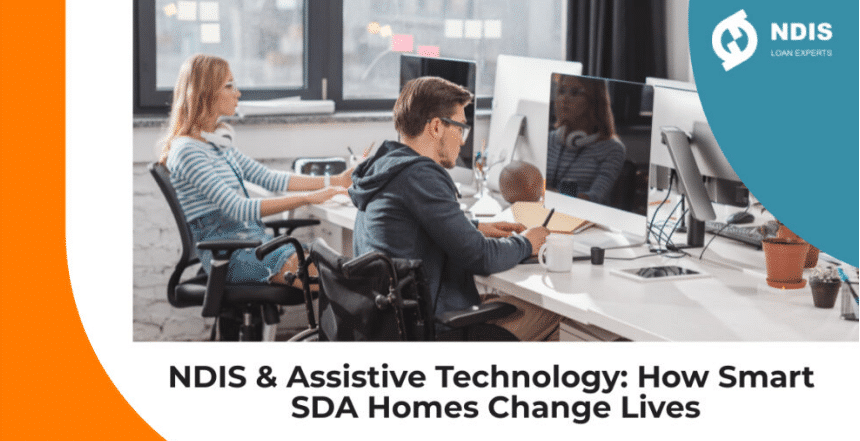Assistive technology helps National Disability Insurance Scheme (NDIS) recipients to live fuller lives, especially those who have the highest care needs in specialist disability accommodation (SDA). It includes any devices or equipment that helps NDIS recipients to do tasks that they can’t do due to their disability, or to do those tasks more easily or safely.
Certain assistive technology products
Examples of assisted technology NDIS products in SDA can include devices or equipment (whether high tech or low tech) to automatically perform tasks such as:
-
- Open and close doors (for access, safety and security), including garage doors.
-
- Open and close blinds (for privacy).
-
- Touch or voice activate appliances (for ease of use).
-
- Turn lights on and off (for practicality and convenience).
-
- Make emergency calls (for health and safety).
-
- Operate front door intercom systems (for safety and security).
-
- Adjust air conditioning temperature and fan speeds. This is vital for the many high-needs NDIS recipients who are unable to regulate their own body temperatures.
These smart home automation products can cater for NDIS recipients’ diverse needs. Many are customisable or have artificial intelligence capabilities. The assistive technology can also be controlled with computer software via voice commands through Alexa or Siri, or via electronic devices such as mobile phones, tablets, computer apps, or sensors. This makes it easier for NDIS recipients to control their home environment and live more independently.
An SDA home should be built to facilitate high-speed internet via Wi-Fi so that NDIS recipients are able to take full advantage of its benefits. The capabilities of assistive technology are ever-increasing, and its benefits can help reduce the ongoing daily care costs for NDIS recipients.
Categories of NDIS-funded assistive technologies
The NDIS has three categories of assistive technology that it funds:
-
- low cost (under $1,500),
-
- mid-cost (between $1,500 and $15,000), and
-
- high cost (over $15,000).
SDA usually has a range of mid to high-cost assistive technology. Examples of mid-cost assistive technology include:
-
- handrails,
-
- portable ramps,
-
- standing hoists,
-
- pressure care mattresses to prevent pressure sores, and
-
- alternative communication devices.
Examples of high-cost assistive technology include:
-
- bed rails, bed transfer aids or adjustable beds, and
-
- complex communication devices and other computer hardware.
Assistive Technology in SDA
Assistive technology plays a key role in the classification of SDA properties. SDA providers must satisfy specific design requirements in each of the four SDA categories (improved liveability, robust, fully accessible and high physical support). The higher the support needs, the greater the assistive technology requirements in the associated SDA design standard.
Supported independent living (SIL) providers, occupational therapists and carers are collectively responsible for ensuring that an SDA recipient has a budget in their NDIS plan to cater for any assistive technology repairs, maintenance or upgrades that may be necessary over time.
SDA recipients (or their family members) should regularly liaise with their SIL provider, occupational therapist and carers to ensure that their assistive technology needs continue to be met.
Assistive technology makes things easier for everyone involved in SDA — from residents through to NDIS carers and other support services. It makes everyone’s lives easier and increases participation in community life.
For further information on how assistive technologies can be incorporated into your NDIS property investment, please get in touch.


